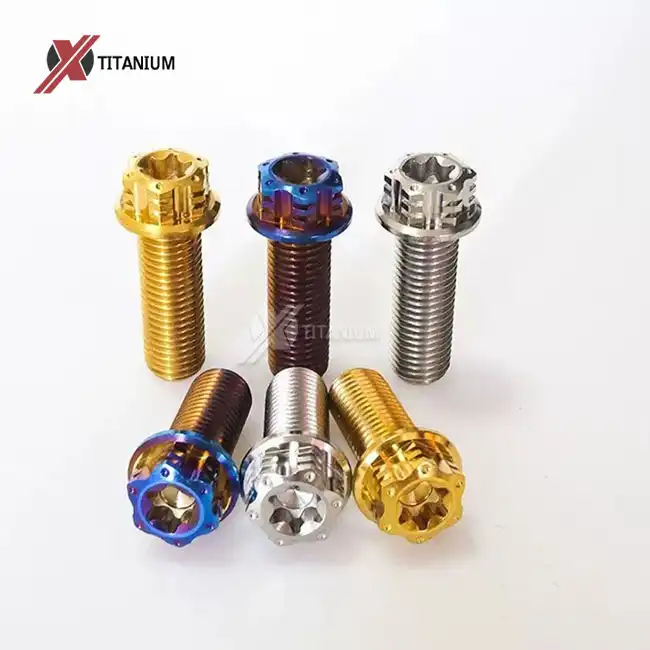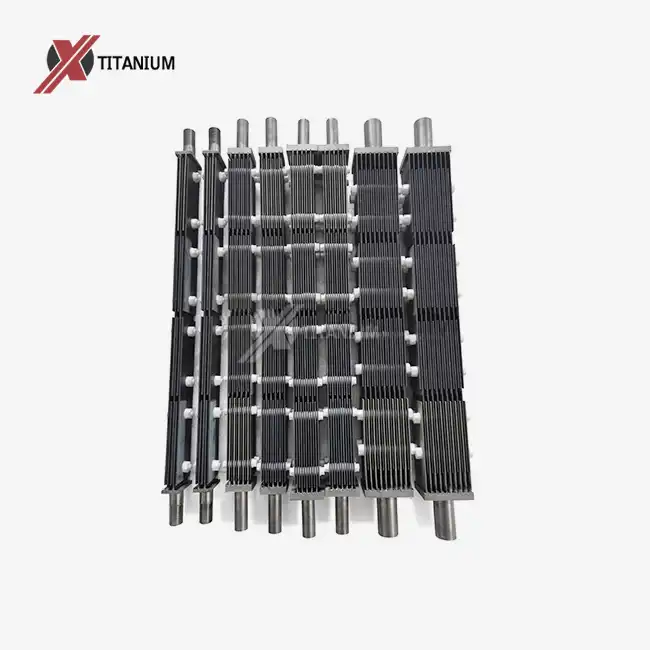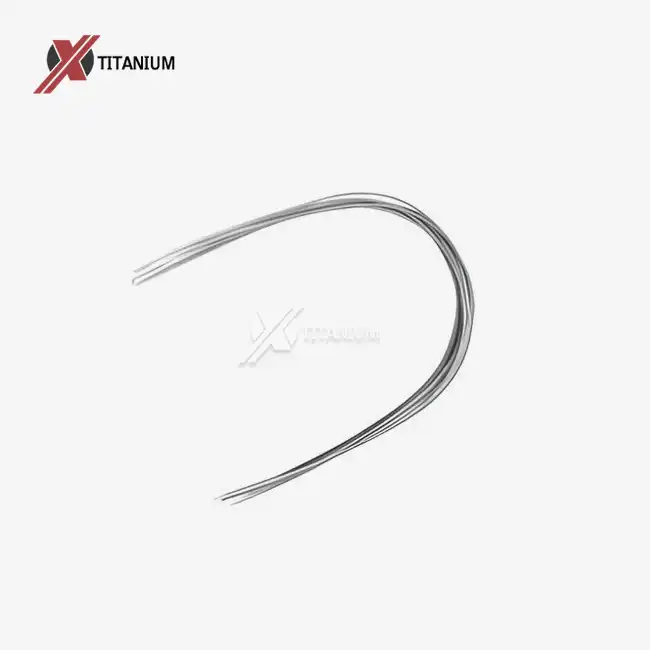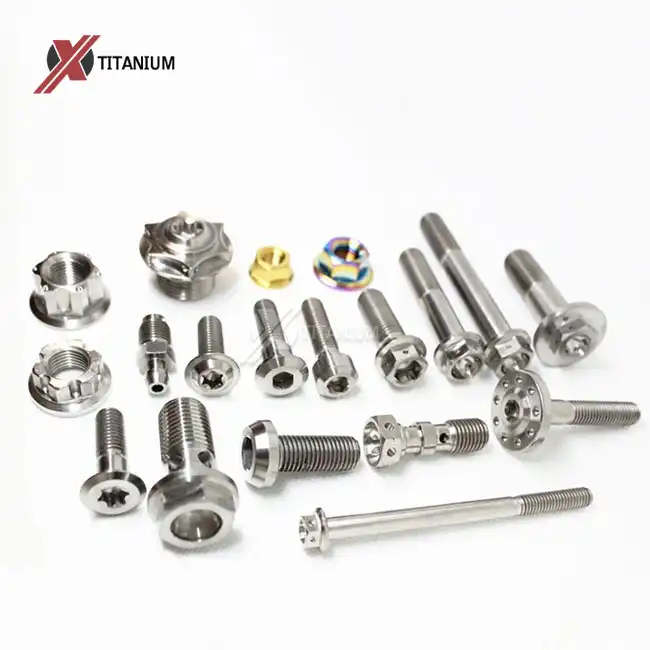The Unparalleled Advantages of Titanium Cotter Pins in Aerospace Applications
Superior Strength-to-Weight Ratio
Titanium cotter pins have revolutionized the aerospace industry with their exceptional strength-to-weight ratio. These diminutive fasteners pack a powerful punch, offering robust performance without compromising on weight. In an industry where every gram matters, the use of titanium cotter pins translates to significant fuel savings and enhanced aircraft efficiency.
The aerospace-grade titanium alloys used in these pins, such as Ti-6Al-4V, boast tensile strengths comparable to steel while being 45% lighter. This remarkable characteristic allows engineers to design aircraft components that are both sturdy and lightweight, contributing to overall performance improvements and reduced operating costs.
Corrosion Resistance in Harsh Environments
One of the standout features of titanium cotter pins is their superior resistance to corrosion. In the aerospace sector, where components are exposed to extreme temperatures, humidity, and corrosive substances, this property is invaluable. Titanium naturally forms a protective oxide layer when exposed to air, creating a barrier against chemical attack.
This innate corrosion resistance ensures that titanium cotter pins maintain their structural integrity even in the most challenging environments, from the salt-laden air of coastal regions to the frigid temperatures of high altitudes. The longevity of these pins reduces maintenance requirements and enhances the overall reliability of aerospace systems.
Thermal Stability and Fire Resistance
Aerospace applications often involve exposure to extreme temperature fluctuations. Titanium cotter pins excel in this domain due to their exceptional thermal stability. These fasteners maintain their mechanical properties across a wide temperature range, from the sub-zero conditions encountered at high altitudes to the elevated temperatures near engine components.
Moreover, titanium's high melting point (approximately 1,668°C) and low thermal conductivity make it inherently fire-resistant. This characteristic is crucial in aerospace applications, where fire safety is paramount. The use of titanium cotter pins contributes to the overall fire resistance of aircraft structures, enhancing passenger safety and compliance with stringent aviation regulations.
Manufacturing Processes and Quality Control for Aerospace Titanium Cotter Pins
Precision Machining Techniques
The production of aerospace-grade titanium cotter pins demands the utmost precision and advanced manufacturing techniques. Computer Numerical Control (CNC) machining is the cornerstone of this process, allowing for the creation of pins with tight tolerances and complex geometries. Multi-axis CNC machines equipped with specialized cutting tools designed for titanium alloys ensure consistent quality and dimensional accuracy.
The machining process often involves multiple stages, including turning, milling, and grinding, to achieve the required surface finish and mechanical properties. Advanced techniques such as Electrical Discharge Machining (EDM) may be employed for creating intricate features or working with particularly hard titanium alloys.
Heat Treatment and Surface Finishing
After machining, titanium cotter pins undergo rigorous heat treatment processes to optimize their mechanical properties. Solution treating and aging (STA) is a common heat treatment method for aerospace-grade titanium alloys, enhancing strength and toughness while maintaining ductility. The precise temperature control and cooling rates during heat treatment are critical in achieving the desired microstructure and performance characteristics.
Following heat treatment, surface finishing techniques such as passivation, anodizing, or nitriding may be applied to further improve corrosion resistance and wear properties. These surface treatments also allow for color coding of cotter pins, facilitating easy identification and inventory management in aerospace assembly operations.
Stringent Quality Control and Certification
The aerospace industry demands the highest levels of quality and reliability, and titanium cotter pins are no exception. Manufacturers implement comprehensive quality control measures throughout the production process. Non-destructive testing (NDT) methods, including ultrasonic inspection and X-ray analysis, are employed to detect any internal defects or inconsistencies in the material. Dimensional inspections using high-precision measuring equipment ensure compliance with tight tolerances.
Each batch of titanium cotter pins undergoes rigorous mechanical testing to verify strength, fatigue resistance, and other critical properties. Additionally, material composition is verified through spectrographic analysis to ensure conformity with aerospace material specifications. The entire manufacturing process is subject to strict documentation and traceability requirements, with each pin typically assigned a unique serial number for lifecycle tracking.
Future Innovations and Emerging Trends in Aerospace Titanium Fasteners
Additive Manufacturing and 3D Printing
The advent of additive manufacturing technologies is poised to revolutionize the production of titanium cotter pins and other aerospace fasteners. 3D printing techniques, such as Selective Laser Melting (SLM) and Electron Beam Melting (EBM), offer the potential to create complex geometries and internal structures that were previously impossible with traditional manufacturing methods. These advanced processes allow for the optimization of pin designs, potentially reducing weight further while maintaining or even improving strength characteristics.
Additive manufacturing also enables rapid prototyping and on-demand production, which could significantly reduce lead times and inventory costs for aerospace manufacturers. As the technology matures and becomes more widely adopted in the aerospace sector, we can expect to see increasingly sophisticated and efficient titanium cotter pin designs emerge.
Smart Fasteners and Integrated Sensors
The integration of smart technologies into titanium cotter pins represents an exciting frontier in aerospace fastener development. Emerging concepts include embedding miniature sensors directly into the pins to monitor stress, temperature, and other critical parameters in real-time. These "smart" cotter pins could provide valuable data for predictive maintenance, enhancing safety and reducing downtime.
Some proposed designs incorporate shape memory alloys or piezoelectric materials that can respond to environmental changes, potentially allowing for self-adjusting or self-locking mechanisms. While still in the early stages of development, these innovations promise to transform titanium cotter pins from passive components into active elements of an aircraft's health monitoring system.
Nanotechnology and Surface Engineering
Advancements in nanotechnology and surface engineering are opening new avenues for enhancing the performance of titanium cotter pins. Nanostructured coatings and surface treatments can significantly improve wear resistance, reduce friction, and enhance corrosion protection beyond what is achievable with conventional methods. Research into titanium-matrix nanocomposites shows promise for creating cotter pins with even higher strength-to-weight ratios and improved fatigue resistance.
Additionally, biomimetic surface textures inspired by natural structures could lead to fasteners with superior self-cleaning or de-icing properties, addressing specific challenges in aerospace applications. As these technologies mature, we can anticipate titanium cotter pins that not only meet but exceed the ever-increasing demands of the aerospace industry.
Conclusion
Aerospace Grade Titanium Cotter Pins epitomize the perfect fusion of precision engineering and advanced materials science. These small yet critical components play a vital role in ensuring the safety, reliability, and performance of modern aircraft and spacecraft. As the aerospace industry continues to push the boundaries of technology and innovation, titanium cotter pins will undoubtedly evolve, incorporating new materials, manufacturing techniques, and smart features.
For those seeking to explore the cutting-edge world of aerospace fasteners or require custom titanium solutions, Baoji Chuanglian New Metal Material Co., Ltd. stands ready to provide expert guidance and high-quality products. Contact us at info@cltifastener.com or djy6580@aliyun.com to learn more about our aerospace-grade titanium offerings and how we can support your engineering challenges.




